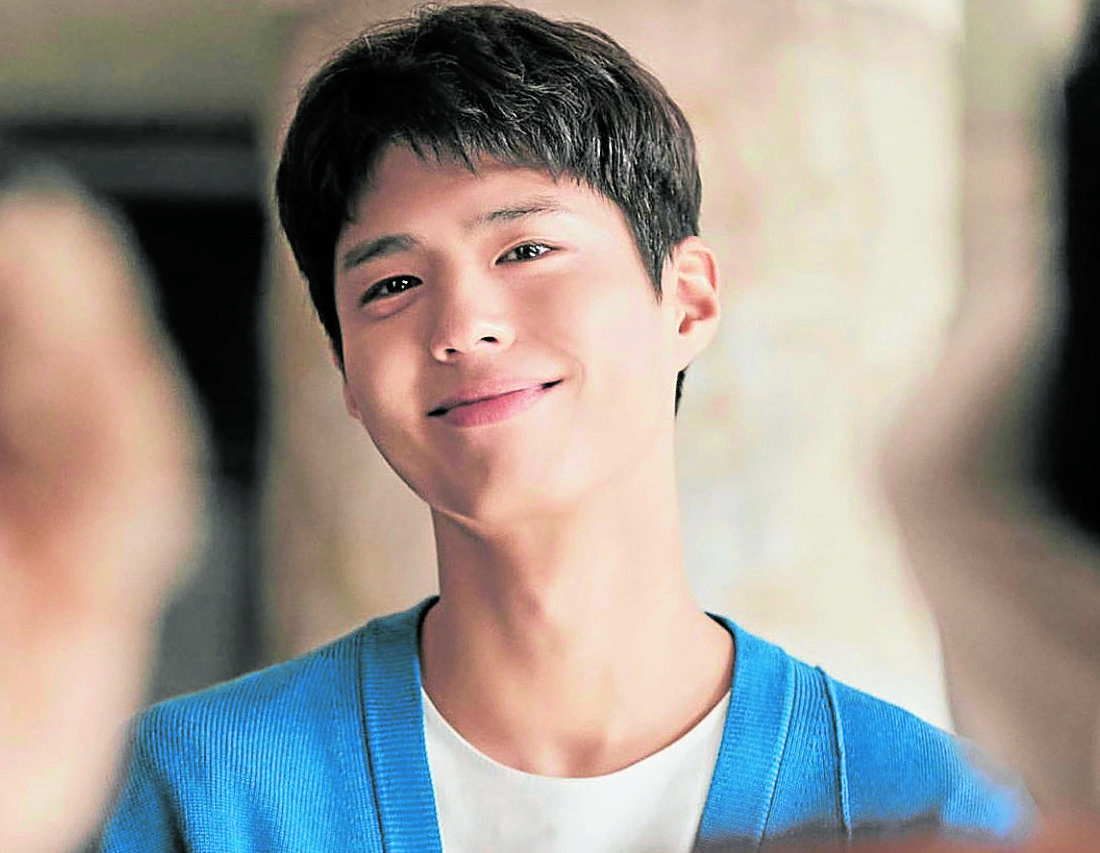
On the first day of classes every semester, when I meet my new students, I always ask them what brought them to Korean language class. Their facial expressions show they are too timid to speak in front of new classmates, but after a couple of students confidently say they are fans of this or that K-drama or K-pop group, the rest of the class suddenly feels liberated, and violent shrieking follows as they find common fandoms among them.
Though I’m Korean, I admit I’m not a huge fan of Korean dramas. I tried to watch some contemporary ones, just to keep up with my students. I also got hooked, but I don’t follow each new release that comes out.
It is known that the 1991 Korean soap opera “What on Earth is Love (Sarangi Mwogilae)” recorded an unprecedented high viewership locally. When CCTV China aired the drama series, it surprisingly piqued Chinese viewers’ interest in Korean culture for the first time.
The story instantly captivated Chinese viewers. It was about an ordinary Korean family, with an ultra-conservative father-in-law, an oppressed mother-in-law, and a newly married couple who struggled under the conservative patriarch. While foreign soap operas in China during the time struggled with low viewer ratings, this soap opera raked in an exceptional 4.3 percent, and started the Korean soap opera boom in the Chinese mainland.
The term “Korean wave” or Hallyu (Hanliu in Chinese) was coined by Chinese fans who first witnessed the spread of Korean culture. It made the Korean cultural industry a global phenomenon, welcomed and embraced by non-Koreans.
The K-drama “Winter Sonata (Gyeoul Yeon-ga)” (KBS 2002) started the ascent, as it conquered Japan. In “Yonsama Syndrome,” Japanese ladies fell in love with main actor Bae Yong Jun, and the romance lasted more than a decade.
The wave was eventually dubbed “Hallyu 1.0,” with a steady stream of other Korean soap operas slowly gaining momentum and international awareness, and eventually contributing to Korea’s economy.
‘Gangnam Style’
Realizing the export potential of Korean popular culture and media products, “Hallyu 2.0” widened its horizons, with more TV stations exporting their soap operas.
In 2012, Psy’s song “Gangnam Style” swept the globe, setting the stage for other K-pop music acts. Then there were video games, movies, cartoon characters and sports. Eventually, “Hallyu 3.0” made the world embrace the Korean language, cuisine, tourism, traditional and popular culture, and various Korean brands.
One thing I observed in the recent development of Korean popular culture is the interconnectedness of cultural content. For instance, the Korean Netflix series “Kingdom” was originally a webtoon (web cartoon) that award-winning scriptwriter Kim Eun-hee transformed into its latest version. Even recent Korean blockbusters “Along with the Gods,” “Extreme Job” and “Hitman” are adaptations of webtoons. Some of the well-known Korean romantic dramas were already adapted from comics, such as “Full House,” “Princess Hours” and “Boys Over Flowers.”
However, it was “Incomplete Life,” or better known by its Korean title “Misaeng,” that opened a new phase for Korean dramas in 2014 with the convergence of different contents. “Misaeng” was loved by domestic and international audiences because of its subject—a fresh-out-of-college employee who had just entered society and the real world. The audience saw their own reality in the main character.
More cultural creators explored more diverse storytelling on various platforms, such as games, characters, musicals and animation. A mobile game “BTS World,” developed by Takeone Company Corp and published by Netmarble, won as mobile game of the year at the 2019 Golden Joystick Awards, and brought Big Hit Entertainment enormous success.

While Hallyu is gaining immense popularity, the question raised is, will it be sustainable? If so, until when?
This depends on how the cultural industry and its creators continue with strategic long-term visions. When there was not enough Korean popular cultural content, Koreans also turned to foreign media, especially American popular culture. At the height of tense 1990s Korea-Japan diplomatic relations, the importation of Japanese popular culture was banned, so Koreans procured materials through underground sources.
The emergence of Korean popular culture in its early days has been compared to that of Hong Kong films, Taiwanese soap operas, Mando-pop, Canto-pop and Japanese anime, which had already peaked, leading to the assumption that Hallyu would soon slow down, too.
Trial and error
A recent tweet triggered the online debate on whether the influx of Korean dramas on Netflix will spell doom for Filipino TV and movies in the future. This is sophistry.
Time was when K-dramas were filled with clichéd scripts, and sappy, predictable storylines. Hallyu was not an overnight success; it went through a long period of trial and error. After stakeholders discovered the potential of K-dramas, they worked hand in hand to advance it to the next level.
In the last few years, innovations in the production and distribution of Hallyu content, aided by numerous technologies, have enhanced and extended Hallyu’s perceived life span. Various sectors have employed these technologies to achieve exposure at an even greater level, and a more global strategy that made audiences eager to consume more K-pop and K-drama. These innovations spilled over to other aspects of Korean culture, such as traditional and modern-day clothing, language and food.
When Korean dramas gain popularity overseas, it doesn’t just benefit the entertainment industry; it also gives exposure to big sectors like automobile companies, cosmetics, Korean language education, and so on.
A misconception among foreigners is that Hallyu is backed by the Korean government. The Korean government indeed provides generous support, but it does not intervene. The Hallyu phenomenon started as a private venture with little to zero government intervention. Only when K-pop rose to become a global phenomenon did the government begin formulating policies and taking action to incorporate it into their Soft Power strategies.

The government doesn’t promote individual actors or dramas produced by private entities, or any K-pop group’s concerts. The success of Korean pop culture is used as a tool to promote the national brand of Korea. They have been launching various “K-“ campaigns (e.g. K-food, K-fashion, K-friends).
When new dramas gain fame, their shooting locations become tourist destinations; those places will be promoted by the government’s Korea Tourism Organization for foreign tourists to visit, and local tourism thrives. Korea’s former domestic culture was witnessed by a global audien ce, and that empowered Korean cultural creators to transcend and showcase upgraded content.
Another interesting characteristic of Hallyu development is public-private partnership (PPP). Through Korean Brand and Entertainment Expo (KBEE), the government gives incentives to small and medium enterprises (SMEs) to produce Hallyu-based commodities (cosmetics, fashion, lifestyle, medicine/medical supplies, agricultural supplies) and services (content, medicine, tourism, education, finance, logistics, trading, intellectual property rights).
This creative economy synergizes mutual sustainability of the culture and business sectors, and eventually contributes to the stability of the nation.
‘Koreanization’
However, there are two crucial points to ponder.
First, the Korean government is constantly reminded by the public not to intervene with the cultural industry. Approaches sneakily employed by previous administrations to regulate Hallyu products and blacklist anti-government artists and cultural figures taught the current national administration hard lessons.
Second, Korean culture, for some foreigners, seems to manipulate other local cultures, and is deemed a form of neoliberal “Koreanization.” It is important to assure foreign countries that Korea went from being totally unknown to globally acknowledged, and that is something Korea wishes to share with them. Korea’s soft power diplomacy tries to diversify bilateral relations between Korea and foreign countries, and to find constructive ways to localize cultural content or markets.
One example is the Asean-Korea Center’s recent forum in Manila, where they discussed creative economy and cultural industry, especially in gaming, animation and movies. In seeking win-win solutions, Korea and the Philippines, in both the public and private sectors, should strategically collaborate, innovate and incorporate each other’s cultural assets in producing creative products with added value.
In the advent of Industry 4.0, defined as the digitization of manufacturing and the optimization of computerization, many countries have started exploring different ways to enhance their economies beyond traditional economic activities by looking at new frontiers. Korea particularly looked at the digital sphere and started to nurture start-ups and SMEs, encouraging private sectors to explore the creative convergence of merging culture, science and technology in the broader areas.

Korea once again broke the boundaries of its capabilities, pushing its culture into the limelight on the global stage. There are massive efforts to complement the traditional “hard power” with a more creative “soft power” approach. This requires the exportation of cultural artifacts and the facilitation of people-to-people exchanges. The New Southern Policy (NSP), Korea’s foreign policy, aims to achieve this with the Philippines and other Asean member states.
Many Filipinos are proud of the unprecedented success of the soap opera “Pangako sa ’Yo” in Southeast Asia, Africa and even in China. After the success of “Pangako sa ’Yo” a decade ago, how much have Filipino soap operas and other cultural products grown? This is the question we can ponder. Instead of nitpicking, grassroots cultural industry stakeholders should break free from the nostalgia of past glory and upgrade, explore and innovate on Philippine Soft Power and proudly show the global audience what it has been waiting for.
That may be a long journey, but the government and private sectors’ genuine cooperation and long-term partnership must go hand in hand.
—CONTRIBUTED INQ
The author is assistant professorial fellow in the Department of Linguistics, University of the Philippines Diliman, and research fellow at the UP Korea Research Center.











































